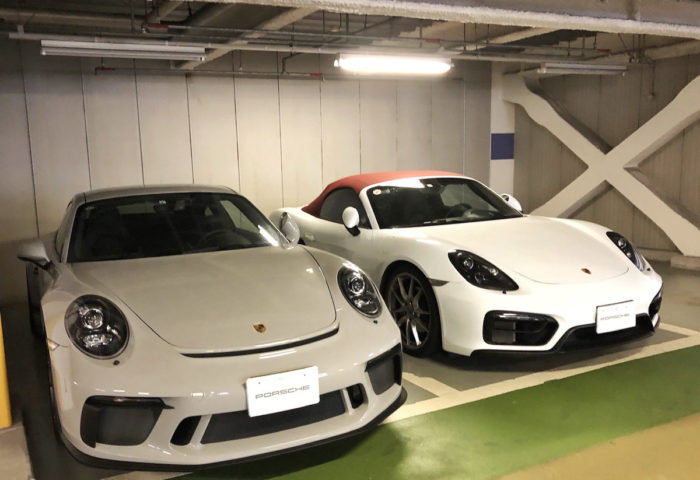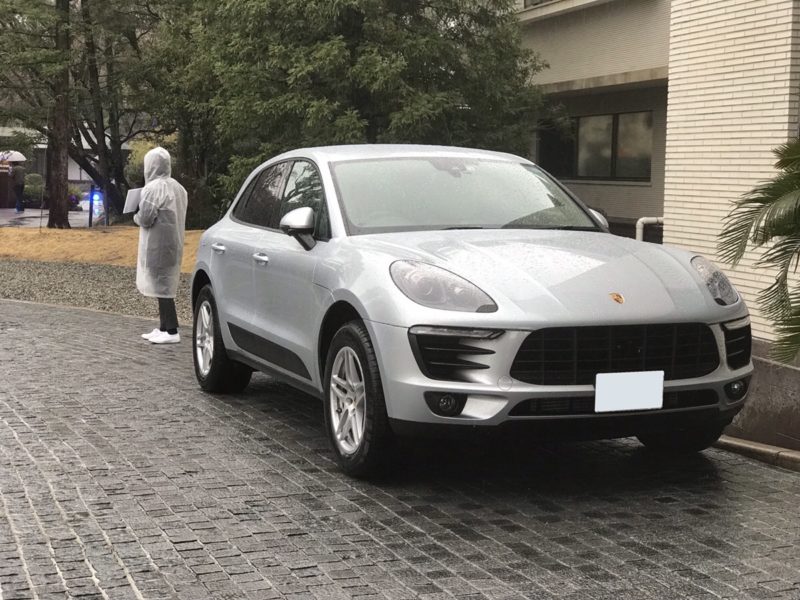Porsche inspection and maintenance, how do Porsche owners do it?
Published on: December 22, 2020

Porsche Maintenance
I recently inspected a Porsche (Boxster, ,964When I wrote the article about the car (see below), I received comments from readers about problems, inspections, and maintenance related to their own cars.
As I look at it, I think, "This is valuable information that only the actual owner could know...Since many of them were felt to be "very good," we decided to introduce them in this blog.
Although the contents will vary greatly depending on the car's mileage, usual driving style, individual differences, etc., we would be happy to see this information as real information for owners.
Details of Porsche defects, maintenance, etc.
Porsche 911 GT3
The mileage is now almost 10,000 km. 500 km or more at a time, but sometimes I don't move it for 2 months when I don't ride it.I've had two abnormal tire pressure alarms so far, but as a result, I've only lost more than 0.3 of air.It was.
Then I took it in for a one year inspection.Minor oil leakwas found and required hospitalization for a while.(Mr. 991 treeing package with almost the same specifications)
Porsche 911 GT3
I drive my GT3 every day, but around the 10,000 km mark, the seats (sports plus seats) started to make a squeaking sound like a cheap sofa while driving, and when I let out the clutch or put pressure on my back, it started to make a crackling sound in the lower part of my back.The crackling sound was fixed by precedent at the one-year inspection.
In early spring, there was a strange noise on the left front wheel when driving at low speeds, as if the pads were interfering. That became less of a concern as the temperature rose, but there were other noises that I noticed around the shift lever when turning about 7,000 rpm.(991-2 GT3 MT)

Porsche 911 (930)
The cost of the inspection itself for a 964 (911) is the same as for a normal car, if it were different, it would be wacky.It is important to know how much it takes and is taken for routine maintenance.I think it is. Depending on the mileage, the oil change time will change, and each part of the car will need maintenance.
Warm-up operation is also important. Water-cooled models do not require careful warm-up operation, butI think air-cooled Porsche should do it.The engine is warmed up and the clearances of each part are taken care of, so it is best to avoid putting a load on it when it is cold.
Some journalists and others say it is unnecessary, but I am of the opinion that it is necessary (laugh).
becauseI have owned my 930 for 29 years and it has almost 260,000 km, but the engine has been non-overhauled and is running great!It is.I try not to push the engine too hard, but the fact that I have been warming it up properly is also a factor in its good condition.I think it is. I think only those who have owned the car for a long time and driven it for a long distance as an owner can understand this area(^-^;(Hiroppon∞☆)
Porsche, cars in general
I always want to know the limits of the machine and rarely change the oil. I always try to know the limits of the machine and seldom change the oil.How long does it run before performance deteriorates?or "How far down do the brake rotors have to go before the pad slides off?I have a quality that I have to experience for myself, for example.
It's tricky and accurate, but of course we know very well that it's "more expensive" and we're going to push it to the limit. I have broken my engine more than once or twice. I am an idiot. If I had love for cars, I would not do such a thing.(Kazu Kogane Hills)
Porsche Macan S
I know that maintenance costs are inevitably high when you drive a long distance. MyThe Macan S also has 70,000 km and 700,000 yen for the second inspection.I remember that I spent 1.2 million yen for the car including the inspection in three months. I remember that I spent 1,200,000 yen including vehicle inspection in 3 months with tire replacement and other repairs in the near future. In addition to the 1.2 million yen, I had to pay about 400,000 yen to carry on the warranty, and I thought, "I can't do this anymore..." so I sold the car.
If it is a Carrera, etc., it is still a mid-size SUV...too high maintenance costs compared to other companies. In fact, the Carrera type is sometimes better.I feel heavier SUVs wear out faster and cost more money.I guess that is what it is all about.
Similarly, the Range Rover cost a little over 500,000 to inspect, while the Ferrari 458 cost 220,000.
To begin with, Porsche's models below 10 million (Macan, Boxster, Cayman) have the same options and maintenance costs as the 20-30 million class supercars, including the Carrera.(Kurumaniasan)

Porsche Macan GTS
My Macan GTS has just under 50,000 km now.The front desk man glancing at me said that the pads and discs will be replaced at the next inspection, and that it would cost about 700,000 yen, so I said, "I'm going to go ahead and do it."Can't I just use a pad first?When I asked, "What do you think?" my sales representative, who used to be a mechanic at a Porsche Center, told me that he thought it was fine to change the discs once every two pad changes, and a used Porsche specialty store he used to work at also said that it was fine to change the discs once every two times.(We don't decide on the number of times, but also make decisions based on the situation.)
It would be better if it were replaced, but I'm not sure what to do considering the cost...(991-2 GT3 MT)
Details of Porsche defects, maintenance, etc.
Thank you all for your various valuable comments. By the way, my husband talks about Porsche maintenance like this.
The price for maintenance and inspection will totally depend on what kind of condition you want to keep the car in, your budget, and whether you want to keep it forever or sell it immediately and move on to the next car.
It depends on whether you want to have it inspected at a dealership or at a general mechanic's shop, whether you want to do it yourself to the extent you can, and the mechanic's advice may vary from person to person, so...It depends on how you want to drive the car.I don't have a right answer. There is no right answer.If I'm happy with it, I think that's all that matters.
And.
I was reminded of the importance of having one's own "axis" for selecting a car as well as for the maintenance that follows, and then making choices and judgments based on what is necessary.
Follow me if you like this blog!


Comment ( 2 )
Trackbacks are closed.
I am glad to meet you
My name is Bio and I drive a 911.
I was wondering about the warm-up operation.
One journalist told me that many people are wrong about warming up.
Warming up doesn't mean turning on the engine and leaving it running!
Then, the transmission and undercarriage must be warmed up.
The point seems to be that it is important to start driving as soon as possible after starting the engine, drive slowly without revving up, and move various parts of the car.
For example, in BMW's M3, wasn't launch control available only after 10 km of driving?
This 10 km may be considered a warm-up operation.
Also, that journalist says get in the car, put on your seatbelt, align the seats, align the mirrors, etc., and when you are ready, turn on the engine and drive off right away. I think I know who that is!
The point is that leaving the engine running is not warming up, is it?
bio-acid
Nice to meet you and thank you for visiting our blog.
>The point is that leaving the engine running is not warming up, is it?
As you say, running it slowly seems to be the way to warm it up!
Thank you for the info!